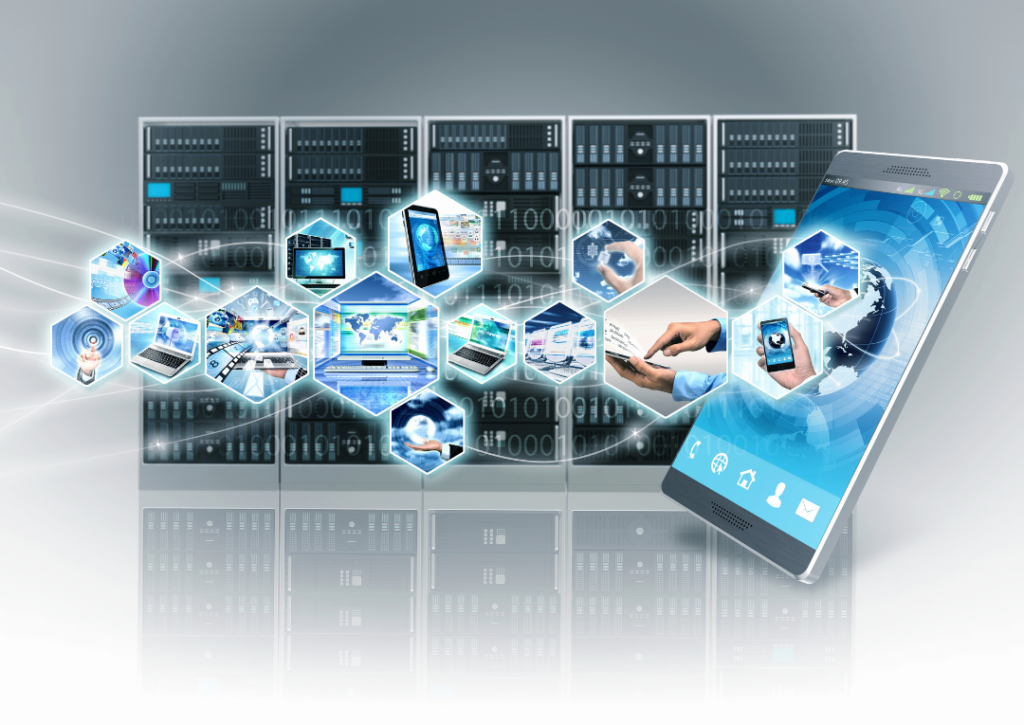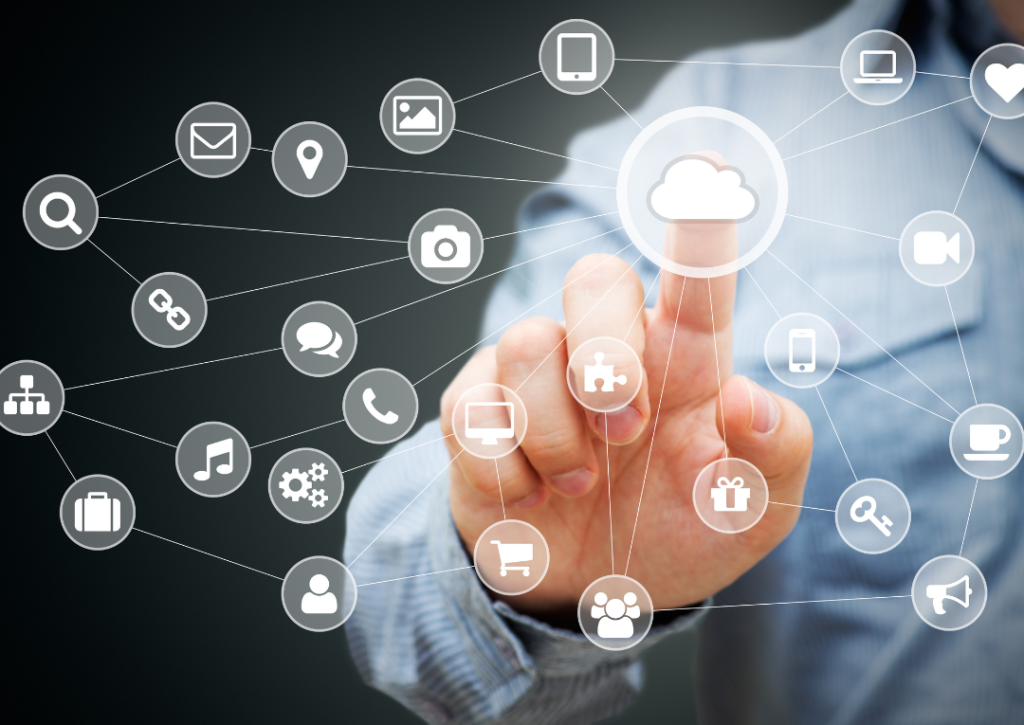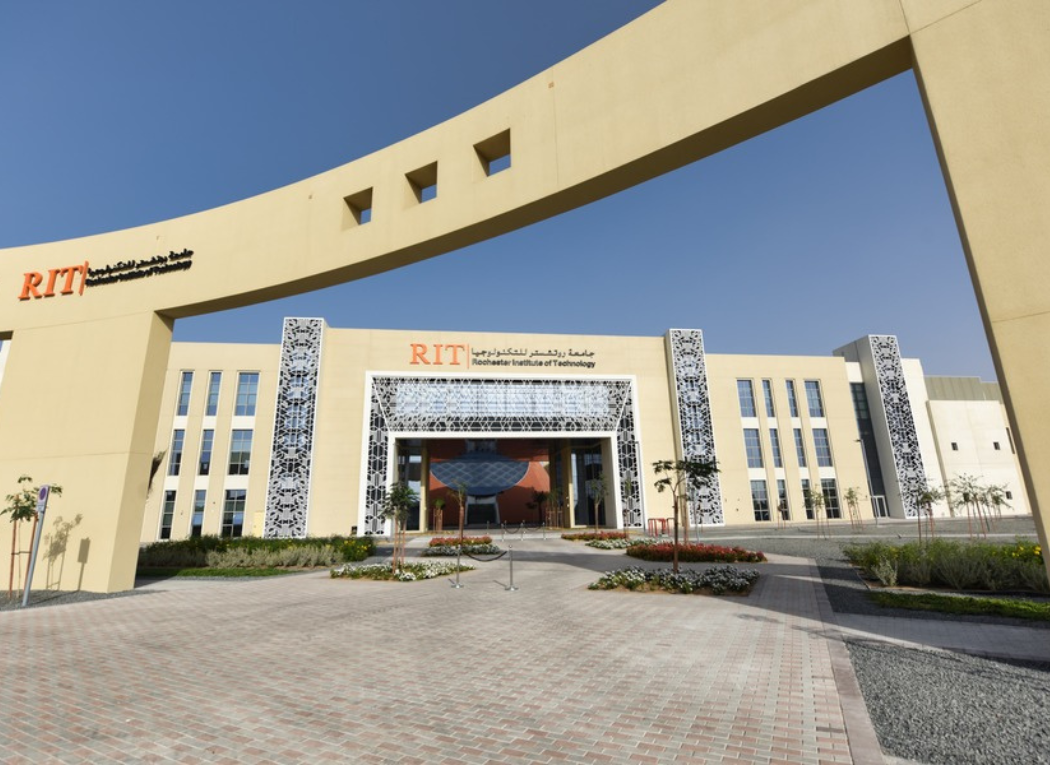Introduction
Welcome to the digital age, where technology has become an integral part of our daily lives. From smartphones to smart homes, we are constantly surrounded by gadgets and innovations that make our lives easier and more efficient. Technology has revolutionized the way we communicate, work, learn, and entertain ourselves. But with all its advantages come a few drawbacks as well. In this blog post, we will explore the advantages and disadvantages of technology in today’s world. So grab your favorite device and let’s dive into the exciting world of tech!

Advantages of Technology
In today’s fast-paced world, technology has become an integral part of our lives. It has revolutionized the way we communicate, work, and access information. The advantages offered by technology are abundant and wide-ranging.
Improved Communication and Connectivity
One major advantage of technology is the improved communication it enables. With just a few clicks, we can connect with people around the globe through various means like social media platforms, instant messaging apps, or video conferencing tools. This ease of communication has made long-distance relationships easier to maintain and business collaborations more efficient.
Increased Efficiency and Productivity
Technology has also greatly increased efficiency in different aspects of our lives. From automated processes in industries to time-saving devices in households, technology streamlines tasks and saves valuable time. This increase in productivity allows us to accomplish more within shorter periods.
Access to Information and Education
The internet serves as a vast knowledge hub that provides access to endless amounts of information on any subject imaginable. Whether for educational purposes or personal interest, this easy access to information allows individuals from all walks of life to enhance their knowledge base without limitations.
Technology brings numerous advantages that improve our daily lives significantly. It enhances global connectivity through seamless communication channels across borders while boosting efficiency levels at work and home alike. Furthermore, it offers unparalleled access to information which empowers individuals with knowledge at their fingertips.
Improved Communication and Connectivity
In today’s digital age, one of the greatest advantages of technology is the improved communication and connectivity it offers. Gone are the days when we had to rely solely on traditional means of communication like snail mail or landline phones. With just a few taps on our smartphones, we can instantly connect with people across the globe.
Thanks to social media platforms and messaging apps, staying in touch with friends and family has become effortless. We can share updates about our lives, send quick messages, or even have video calls from anywhere in the world. This level of connectivity has brought us closer together, bridging geographical gaps and allowing for meaningful interactions despite physical distances.
Moreover, technology has revolutionized business communications as well. Email has replaced paper-based letters as an efficient way to exchange information within organizations. Video conferencing tools enable remote meetings without the need for expensive travel arrangements.
Additionally, smartphones have made it possible for us to access emails on the go and respond promptly, leading to faster response times and increased productivity in professional settings. Many businesses now rely heavily on instant messaging apps that facilitate real-time collaboration among team members regardless of their location.
Improved communication and connectivity through technology have transformed how we interact with others personally and professionally. It has made our lives more convenient by enabling instant connections at any time or place while fostering global communities that thrive on constant interaction.

Increased Efficiency and Productivity
In today’s fast-paced world, where time is of the essence, technology has played a significant role in increasing efficiency and productivity across various industries. By automating manual tasks and streamlining processes, businesses can save valuable time and resources.
One of the key advantages of technology in terms of efficiency is the ability to automate repetitive tasks. With the help of software applications and tools, organizations can eliminate mundane activities that consume a substantial amount of time. This allows employees to focus on more important and strategic aspects of their work.
Furthermore, technological advancements have led to improved communication channels within companies. Instant messaging platforms, video conferencing tools, and project management software enable seamless collaboration among team members regardless of their physical location. This not only saves time but also facilitates real-time decision-making.
Moreover, technology has revolutionized data storage and analysis capabilities. The advent of cloud computing has made it easier for businesses to store large amounts of information securely while providing convenient access from anywhere at any time. Analytical tools allow companies to process vast datasets quickly, leading to informed decision-making based on accurate insights.
Additionally, automation technologies such as robotic process automation (RPA) have been introduced into various industries like manufacturing and logistics. These technologies are capable of performing repetitive tasks with precision and speed that surpass human capabilities.
However, it’s essential to strike a balance between reliance on technology for increased efficiency without sacrificing human creativity or critical thinking skills in problem-solving situations.
By leveraging technology effectively, businesses can boost their overall productivity levels significantly while optimizing resource allocation – ultimately resulting in improved profitability.
Access to Information and Education
In today’s digital age, technology has revolutionized the way we access information and educate ourselves. With just a few clicks, we can delve into a vast ocean of knowledge from around the world. The internet serves as an invaluable resource that provides us with instant access to information on any topic imaginable.
The availability of online courses and educational platforms has made learning more accessible than ever before. Whether you want to learn a new language, acquire technical skills, or pursue higher education, technology allows you to do so at your own pace and convenience.
Through e-books, audiobooks, and online libraries, technology has transformed the way we consume written material. No longer are we limited by physical books or restricted in our search for specific texts. With digital resources readily available, students can easily find relevant information for their research projects or assignments.
Furthermore, technology enables collaboration among learners across different geographical locations through virtual classrooms and video conferencing tools. This fosters cultural exchange and diversity in perspectives while breaking down barriers to education.
However, it is important to be cautious about the reliability of sources found online as not all information may be accurate or credible. Additionally, excessive reliance on technology for educational purposes can lead to a decrease in critical thinking skills if proper discernment is not exercised.
To make the most out of technology’s advantages in accessing information and education while mitigating its drawbacks requires individuals to develop strong digital literacy skills. Being able to navigate through vast amounts of data effectively ensures that one can separate fact from fiction and critically evaluate sources.
In conclusion (not conclusive), despite some potential pitfalls associated with technological advancements in this area such as false information proliferation or decreased critical thinking ability due to overreliance on these technologies; there is no doubt that access to information via modern technologies plays an essential role in expanding educational opportunities globally.

Disadvantages of Technology
Dependency on technology has become a prevalent issue in today’s society. With rapid advancements and constant innovations, we have grown increasingly reliant on technology to perform even the simplest tasks. From our daily communication to our work and entertainment, technology is now an integral part of our lives.
However, this dependency comes with its drawbacks. One major concern is the negative impact it can have on social interactions. As we immerse ourselves in virtual worlds and digital platforms, face-to-face conversations are becoming scarce. People often prefer texting or messaging over having real conversations, leading to a decline in interpersonal skills and genuine connections.
Moreover, health concerns arise due to excessive screen time and sedentary lifestyles caused by continuous use of devices. Eye strain, sleep disturbances, obesity, and musculoskeletal issues are just a few examples of health problems that can arise from excessive reliance on technology.
Another disadvantage is the potential loss of privacy. With every click we make online or every piece of personal information we share digitally, there is always a risk that our data could be compromised or misused by hackers or companies seeking profit.
Additionally, there is the issue of job displacement as automation continues to advance. Many traditional jobs are being replaced by machines and algorithms that can perform tasks more efficiently than humans. This shift in employment opportunities creates challenges for individuals who need to adapt their skills or find new career paths.
While these disadvantages exist, it’s important not to overlook the benefits that technology brings us every day. It has revolutionized industries such as healthcare and education while providing convenience and efficiency in many aspects of life.
Finding a balance between reaping the advantages offered by technology while mitigating its downsides should be our goal as individuals and as a society moving forward.
Dependency on Technology
In today’s digital age, it is undeniable that technology has become an integral part of our daily lives. From smartphones to laptops, we rely heavily on these devices for various tasks and activities. While there are countless benefits to this dependency on technology, it also comes with its fair share of drawbacks.
One of the major disadvantages is the reliance on technology for even the simplest tasks. We have become so accustomed to using technology that we often struggle when faced with situations where it is not readily available or functioning properly. For example, if your phone battery dies or your internet connection goes down, you may feel lost and helpless without access to essential tools and information.
Moreover, dependency on technology can lead to a decrease in critical thinking skills and problem-solving abilities. When everything is automated and easily accessible at the click of a button, we tend to rely less on our cognitive abilities. This can hinder our creativity and resourcefulness in finding solutions independently.
Additionally, relying too heavily on technology can have negative effects on our physical health. Spending long hours staring at screens can strain our eyesight and cause issues such as eye fatigue or headaches. Moreover, excessive use of mobile devices has been linked to problems like poor posture and repetitive strain injuries.
On a broader scale, dependence on technology also raises concerns about privacy and security. With increasing connectivity comes an increased risk of cyber threats such as hacking or identity theft. Our data stored online may be vulnerable if proper security measures are not in place.
While there are clear drawbacks associated with dependency on technology, it is important to acknowledge its positive aspects as well – improved efficiency in work processes, enhanced communication channels, and access to vast amounts of information just a few clicks away.
Finding a balance between embracing the advantages while being mindful of potential pitfalls becomes crucial when dealing with modern-day technologies.

Negative Impact on Social Interactions
Technology has undoubtedly revolutionized the way we communicate and connect with others. However, it is not without its drawbacks. One of the significant disadvantages of technology is its negative impact on social interactions.
In today’s digital age, many people are glued to their smartphones or other devices, constantly checking notifications and scrolling through social media feeds. This constant need for virtual connection can lead to a decline in face-to-face interactions.
Social skills are an essential aspect of human interaction, enabling us to build relationships, understand non-verbal cues, and foster empathy. Unfortunately, excessive use of technology can hinder these skills from developing properly.
Moreover, relying too much on technology for communication can create a sense of disconnect in personal relationships. Instead of engaging in meaningful conversations or spending quality time together, individuals may become more focused on their screens than the person right in front of them.
Another negative impact is the potential for cyberbullying and online harassment. The anonymity provided by technology allows some individuals to engage in harmful behavior without consequences. This can have serious emotional and psychological effects on victims who experience such abuse.
Additionally, social media platforms often present an idealized version of life that is far from reality. Constant exposure to carefully curated images and posts can lead to feelings of inadequacy or low self-esteem as individuals compare themselves unfavorably with others.
While technology offers numerous benefits that enhance our lives, it’s important not to lose sight of the importance of genuine human connections. Striking a balance between utilizing technology for convenience while still prioritizing face-to-face interactions is crucial for maintaining healthy social relationships.
Health Concerns
One of the significant drawbacks of technology is its potential impact on our health. While it has undoubtedly revolutionized many aspects of our lives, there are growing concerns about the negative consequences it may have on our physical and mental well-being.
Excessive screen time can take a toll on our eyesight. Whether we’re constantly staring at computer screens, smartphones, or tablets, prolonged exposure to digital devices can lead to eye strain and even vision problems in some cases.
Moreover, sedentary behaviors associated with technology use contribute to a more sedentary lifestyle. Spending long hours sitting in front of screens not only leads to physical inactivity but also increases the risk of obesity and related health issues such as diabetes and heart disease.
Additionally, technology often disrupts sleep patterns. The blue light emitted by electronic devices can interfere with melatonin production, making it difficult for us to fall asleep and get quality rest. This lack of proper sleep can have detrimental effects on our overall health and cognitive function.
Furthermore, social media platforms have been linked to increased feelings of anxiety, depression, and low self-esteem among users. Constant comparison with others’ seemingly perfect lives showcased online can negatively impact mental well-being.
Although technology has made life more convenient in many ways, we must be mindful of its potential adverse effects on our health. Finding a balance between utilizing technology for its benefits while minimizing its negative impacts is crucial for maintaining good overall well-being.

Finding a Balance between Benefits and Drawbacks
While technology offers numerous advantages, it is important to acknowledge that there are also drawbacks. It is crucial to find a balance between embracing the benefits of technology while mitigating its negative impacts.
One way to achieve this balance is by setting limits on our technology usage. Constantly being connected can lead to information overload and burnout. Setting boundaries on screen time and creating designated tech-free zones in our lives can help us maintain a healthy relationship with technology.
Additionally, we should prioritize face-to-face interactions over virtual ones. While social media platforms allow us to connect with people from all over the world, they cannot replace genuine human connection. Making an effort to spend quality time with loved ones without the distractions of screens can enhance our relationships and overall well-being.
Another aspect of finding balance involves staying informed about potential health concerns associated with technology use. Being aware of ergonomic practices when using devices, taking breaks from screen time, and practicing good posture can help alleviate physical discomfort related to prolonged tech use.
Furthermore, it is essential to stay informed about privacy and security issues surrounding technology. Understanding how our data is collected and used by tech companies allows us to make more conscious choices regarding what information we share online.
Finding a balance between the benefits and drawbacks of technology requires self-awareness and intentionality in how we engage with it. By acknowledging both the positive aspects as well as the potential pitfalls, we can harness the power of technology while protecting ourselves from its negative effects.
Conclusion
Technology has undoubtedly brought numerous advantages to our lives, revolutionizing how we communicate, work, and access information. The convenience, efficiency, and connectivity that technology provides are undeniable benefits that have transformed various aspects of society. However, it is important to acknowledge that there are also disadvantages associated with the overreliance on technology.
Dependency on technology can lead to a loss of certain skills and abilities. As we become more reliant on devices for tasks such as calculations or spell-checking, our cognitive abilities may decline. Additionally, excessive use of technology can negatively impact social interactions by reducing face-to-face communication and creating barriers between individuals.
Furthermore, health concerns arise from prolonged exposure to screens and sedentary lifestyles resulting from increased reliance on technological devices. Eye strain, musculoskeletal issues, sleep disturbances – these are just a few examples of the potential downsides linked to excessive screen time.
It is essential to find a balance between reaping the benefits of technology while mitigating its drawbacks. This involves being mindful of our usage patterns and making conscious efforts to maintain face-to-face interactions with others. Incorporating regular physical activity into our routines can help counteract some negative health effects associated with extensive device use.
In conclusion (without explicitly stating), embracing technology’s advantages while remaining cautious about its disadvantages allows us to harness its full potential without compromising other areas of life. By using technology responsibly and finding ways to strike a healthy balance in its implementation in society, we can truly optimize its positive impact on our lives while minimizing any adverse consequences.
So let us continue exploring the possibilities that technological advancements offer us but remember not to lose sight of what truly matters: human connection and overall well-being.





